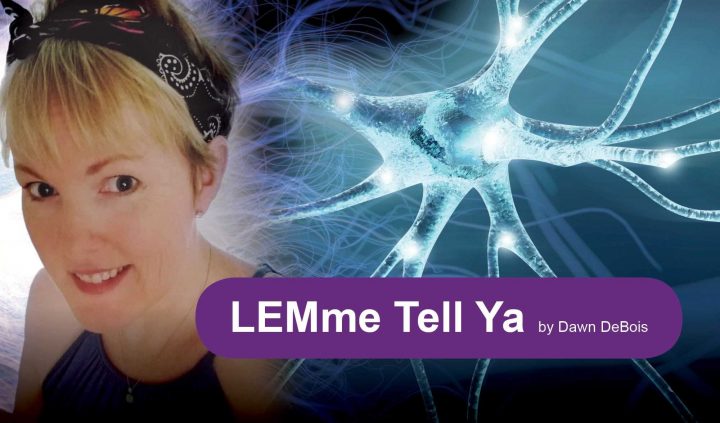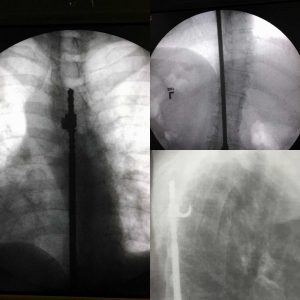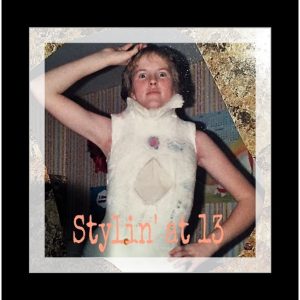Severe Scoliosis: My First Neuromuscular Disease Symptom
Written by |

Most people look back on being 13 with fond memories of passage into their teen years. Those memories might include sleepovers, getting their ears pierced, or other first steps of independence.
For me, memories of my 13th year include enormous amounts of physical pain. It turns out that my first symptom of having an underlying neuromuscular disease was abundantly obvious, only nobody knew what that underlying disease was.
My orthopedic surgeon, Dr. Robert Gause, had been seeing me for idiopathic scoliosis for a few years. The summer after my 13th birthday, my scoliosis escalated so severely that sleep evaded me due to extreme pain. My rib cage was so twisted that it was compromising my lungs and heart. X-rays revealed the curvature between my shoulder blades was 54 degrees — “possibly neuromuscular scoliosis,” according to Dr. Gause.
My memories of that fateful office visit are so clear. Dr. Gause immediately started looking for café-au-lait spots on my body, and when I asked what underlying disease state he was looking for, he told me “von Recklinghausen’s disease, otherwise known as Elephant Man’s disease.” He also said that although I did not have the telltale signs of von Recklinghausen’s, “there is always something genetic or neuromuscular underlying the curvature when it’s that severe.”
On a fall day in 1982, he looked at my foster mother and told her that without surgery, I “would be in a wheelchair by the age of 20,” and that I “wouldn’t even be able to have children” because my hips were so off-center. My surgery was scheduled immediately.
During my five-hour back surgery, I was woken up every 20 minutes to wiggle my toes to make sure they hadn’t accidentally nicked my spinal cord and caused paralysis. The surgery consisted of cutting my ribs away from the side of my spine, putting a 12-inch Harrington rod along my spine, and anchoring it with hooks at the top and bottom once my spine was straightened. Then they scraped bone from my hips to fuse around the entire length of my spine.
In the get-to-know-you, “three truths and a lie” games, I’m always able to trick people with my truth: I grew 3.25 inches in five hours. They measured my height the night before my surgery and again the first day I was able to stand. That is a testament to how crooked my spine was.
While 13-year-olds are extremely fashion-conscious, my surgery was followed by two weeks in the ICU on a Stryker frame. I then wore a 50-pound body cast to school for three months. It went from behind my head in the back, under my chin in the front, all the way down to below my hips. I truly didn’t care what I looked like; I was just relieved to no longer be in pain. My body cast was followed by three months in a brace.
When my LEMS symptoms — weak legs and differing sensations in my limbs — started to progress in my 30s, specialists would often look at the surgical scar down the length of my back and say, “Of course you have numbness; you have a rod in your back.” The muscle spasms in my back, especially between my shoulder blades and around my neck (spasms that many other LEMS patients have told me they experience as well), were attributed, once again, to my fusion, preventing my back muscles from working together normally. This went on for close to 20 years, progressively getting worse until my symptoms couldn’t be ignored as being simply surgery-related.
During a rare disease patient conference I attended, I had a conversation with a neuromuscular specialist about my LEMS diagnosis, asking if there indeed could have been a correlation with the severity of my scoliosis. He replied, “For your back to have that severe of a curvature, there had to have been a neuromuscular component causing the muscle weakness around your vertebrae.”
In the world of LEMS, it’s my personal belief that if patients don’t have a tumor preceding their diagnosis, there are probably other symptoms lurking. Fortunately, for most of you, they didn’t include a 50-pound plaster of Paris body cast fashioned by none other than Dr. Bob Gause. He is a legend for what he has done in orthopedic surgery, and I was fortunate to be treated by him in Bangor, Maine.
***
Note: Lambert-Eaton News is strictly a news and information website about the disease. It does not provide medical advice, diagnosis, or treatment. This content is not intended to be a substitute for professional medical advice, diagnosis, or treatment. Always seek the advice of your physician or another qualified health provider with any questions you may have regarding a medical condition. Never disregard professional medical advice or delay in seeking it because of something you have read on this website.









Sofia
Is she ok now because she looks like is not in the pic❤️
Dawn DeBois
Hi Sophia!
You make a very good point, I should have added a picture of me now. I am just fine now. People actually compliment me for always having such great posture. If you follow me on Twitter @mybattlewithin or on Instagram @thebattlewithinauthor I post a lot more photos there. Thank you for asking! I hope you are well, too!
~Dawn